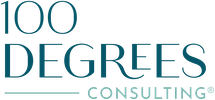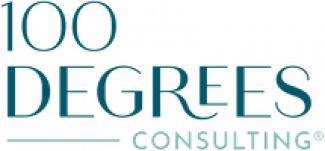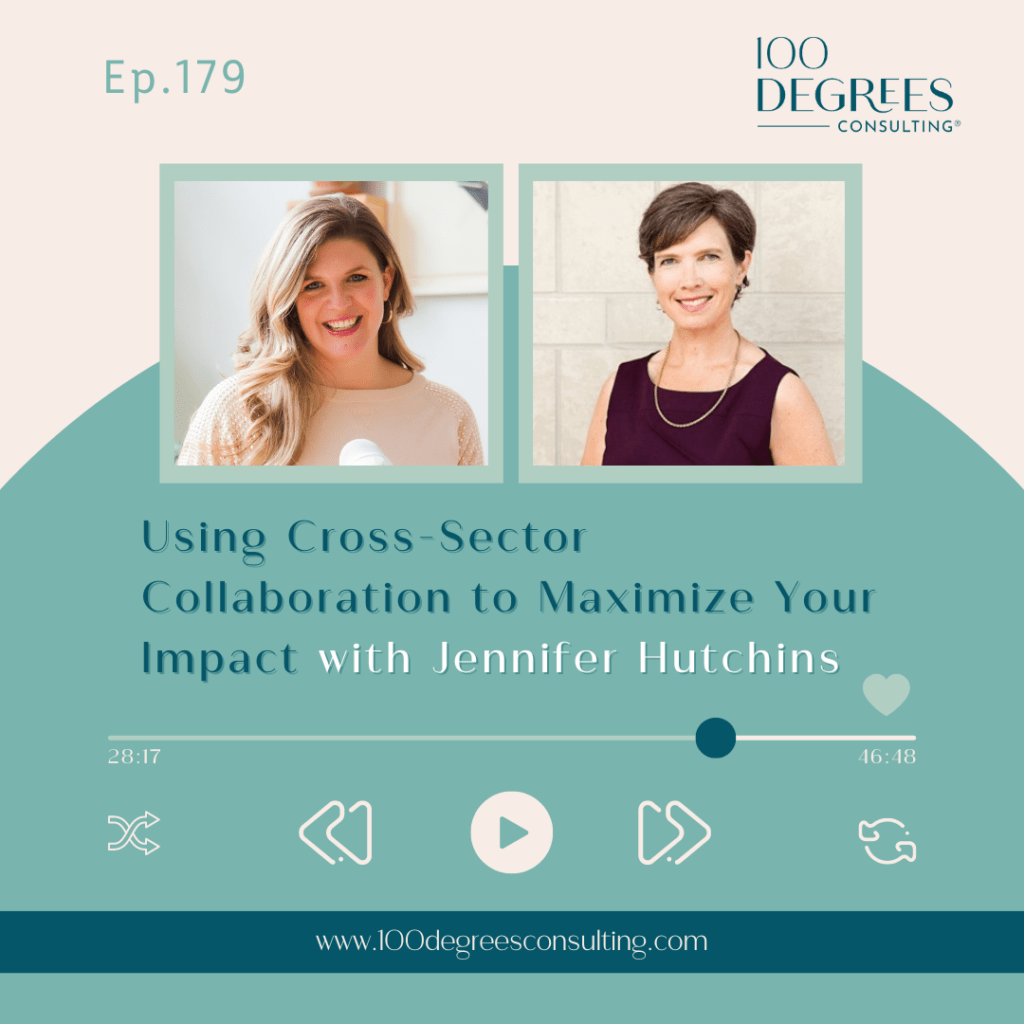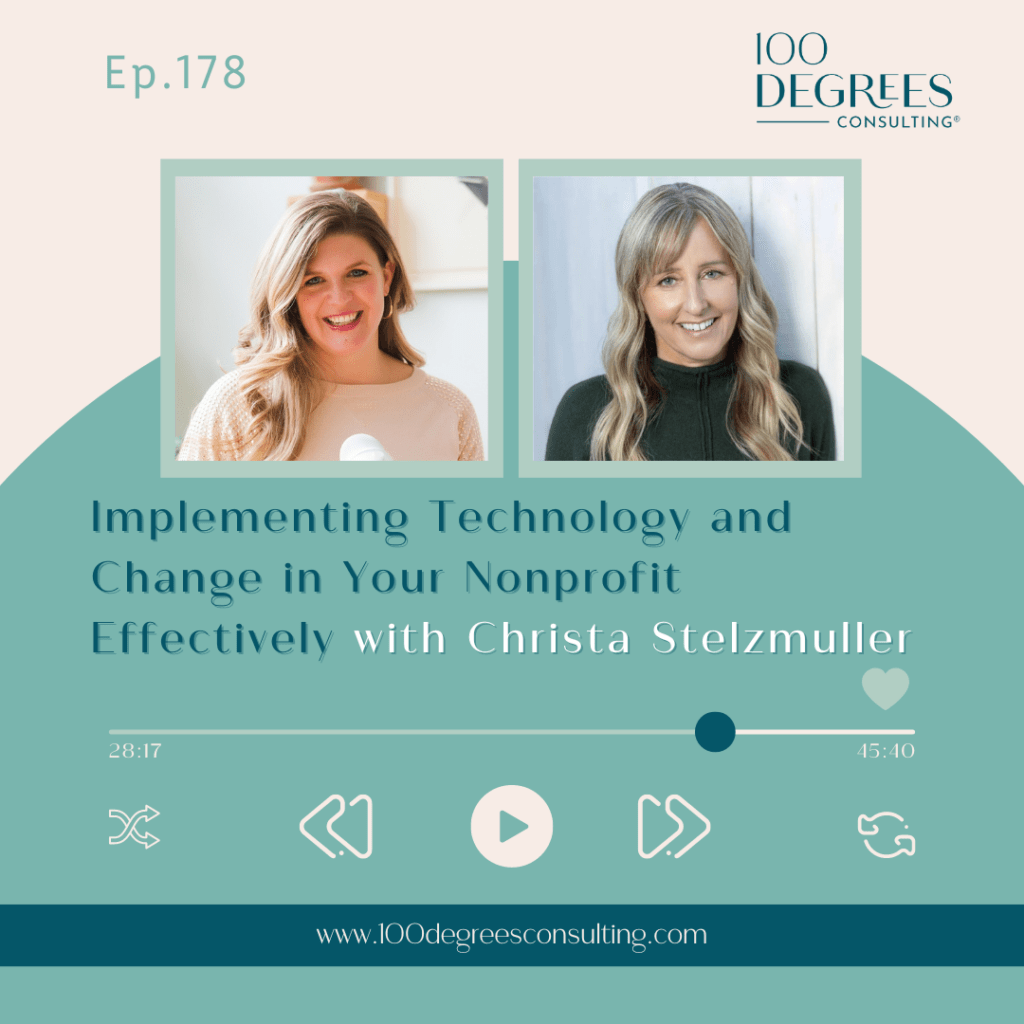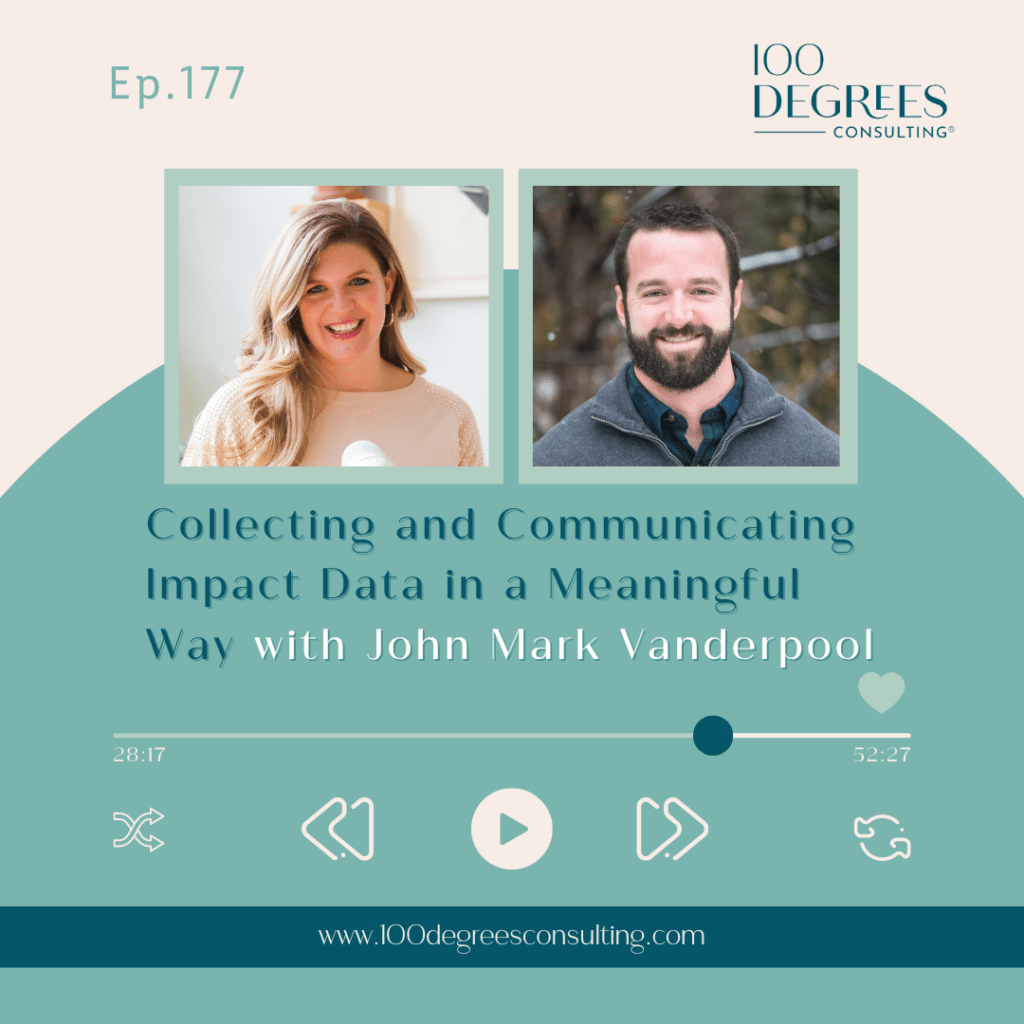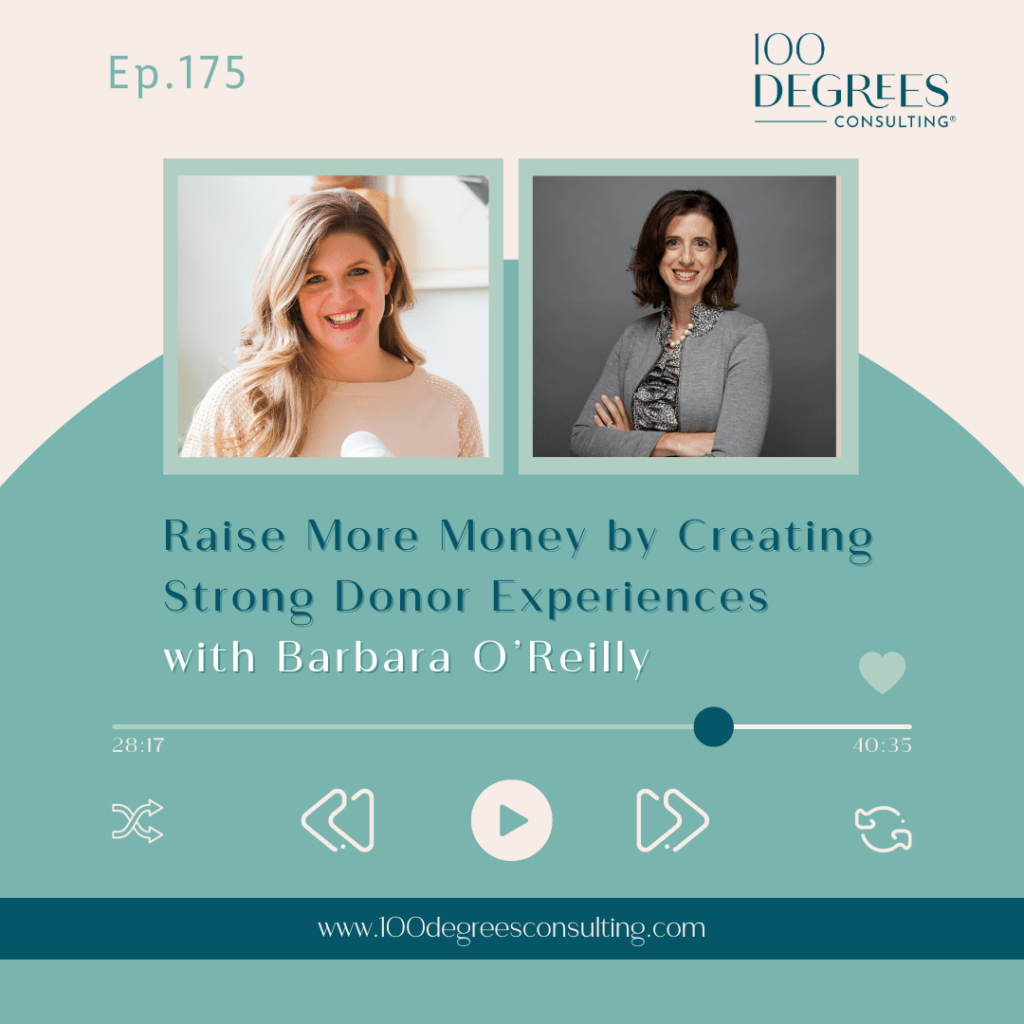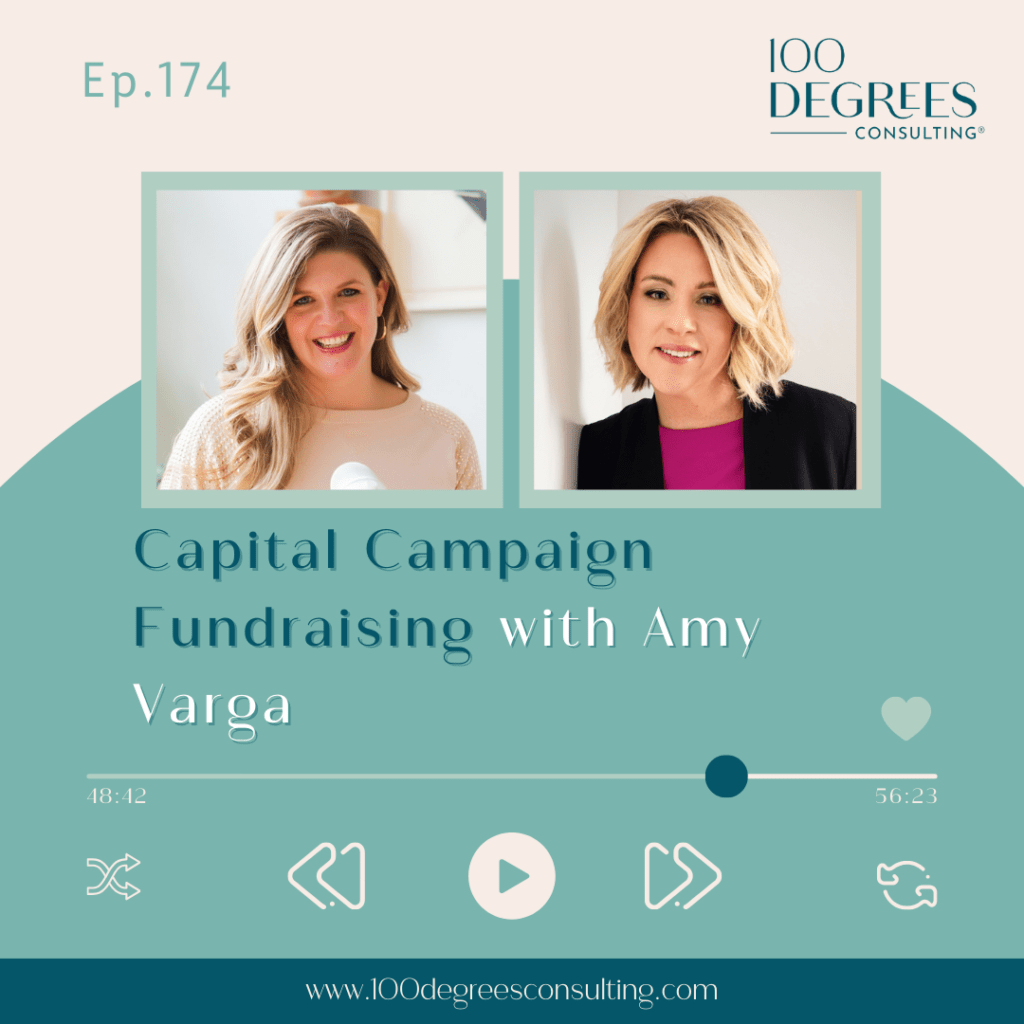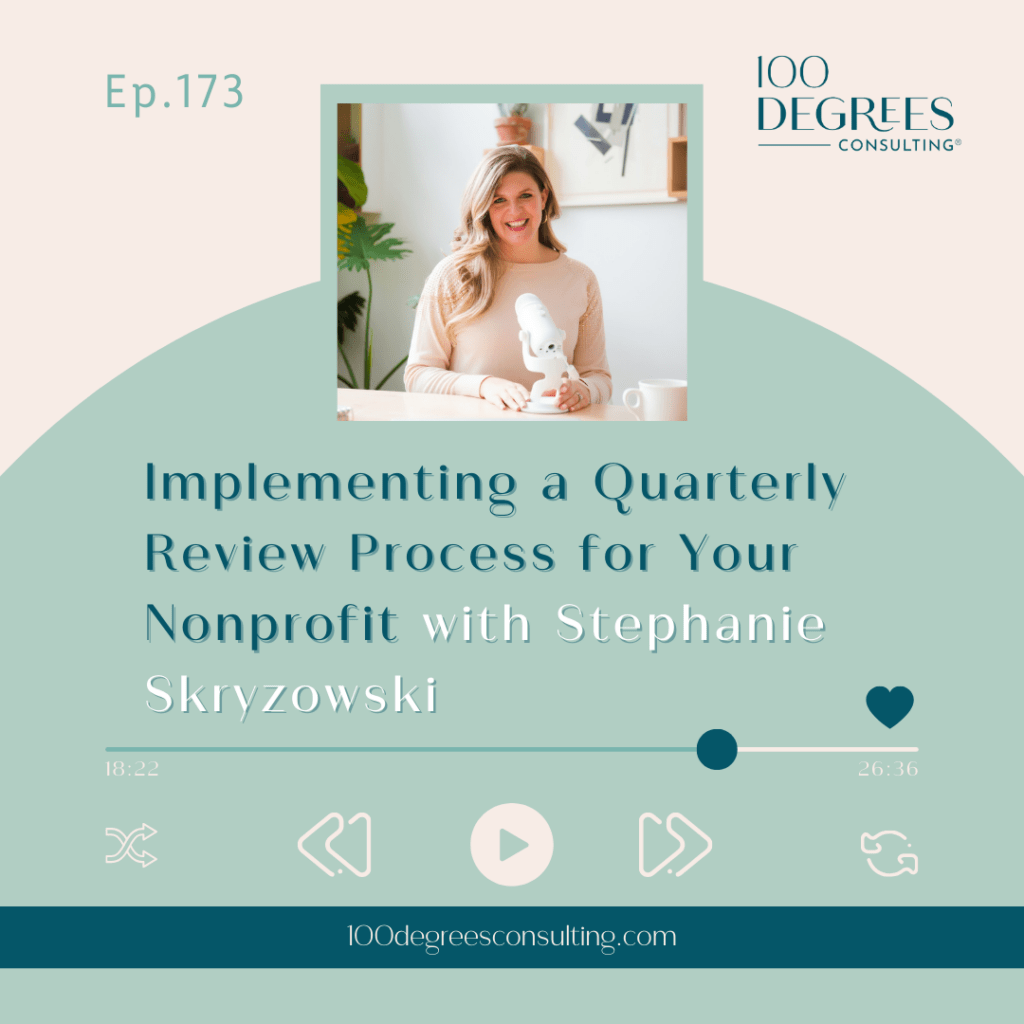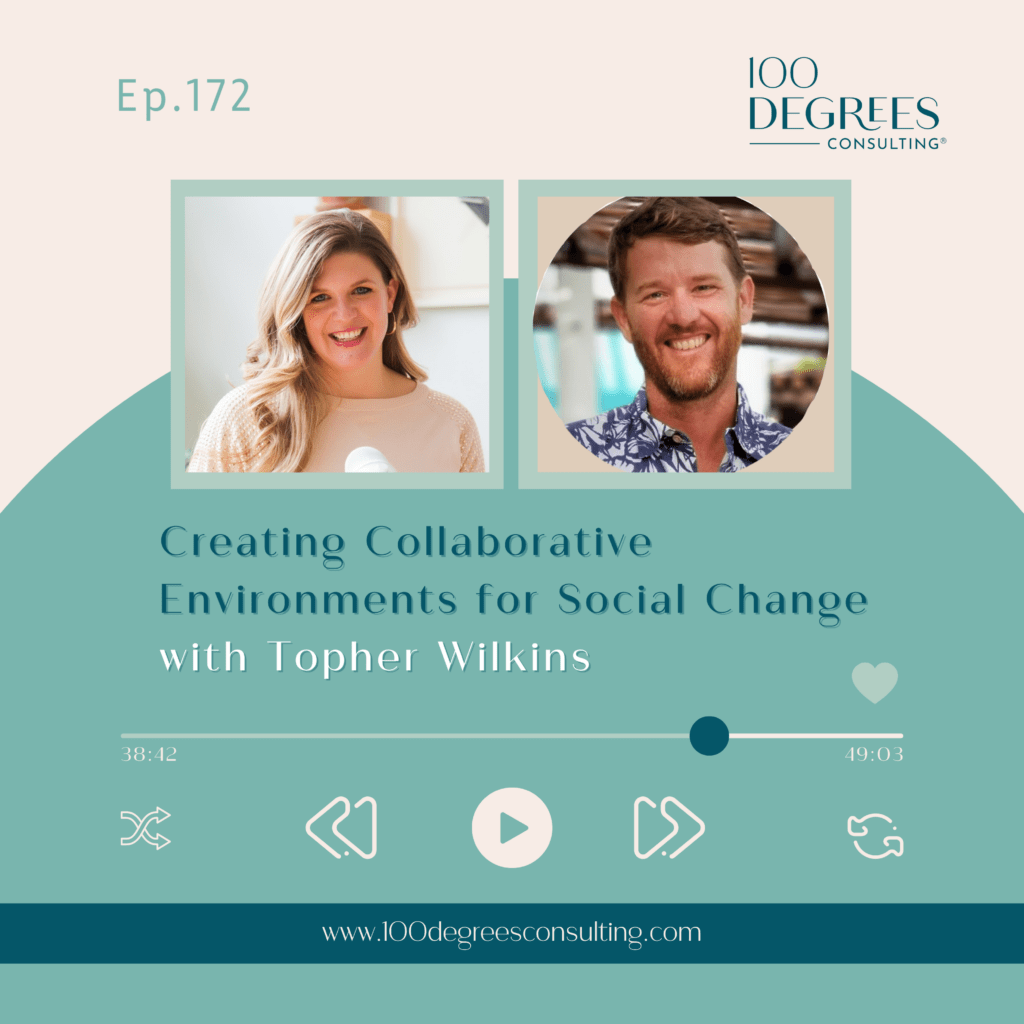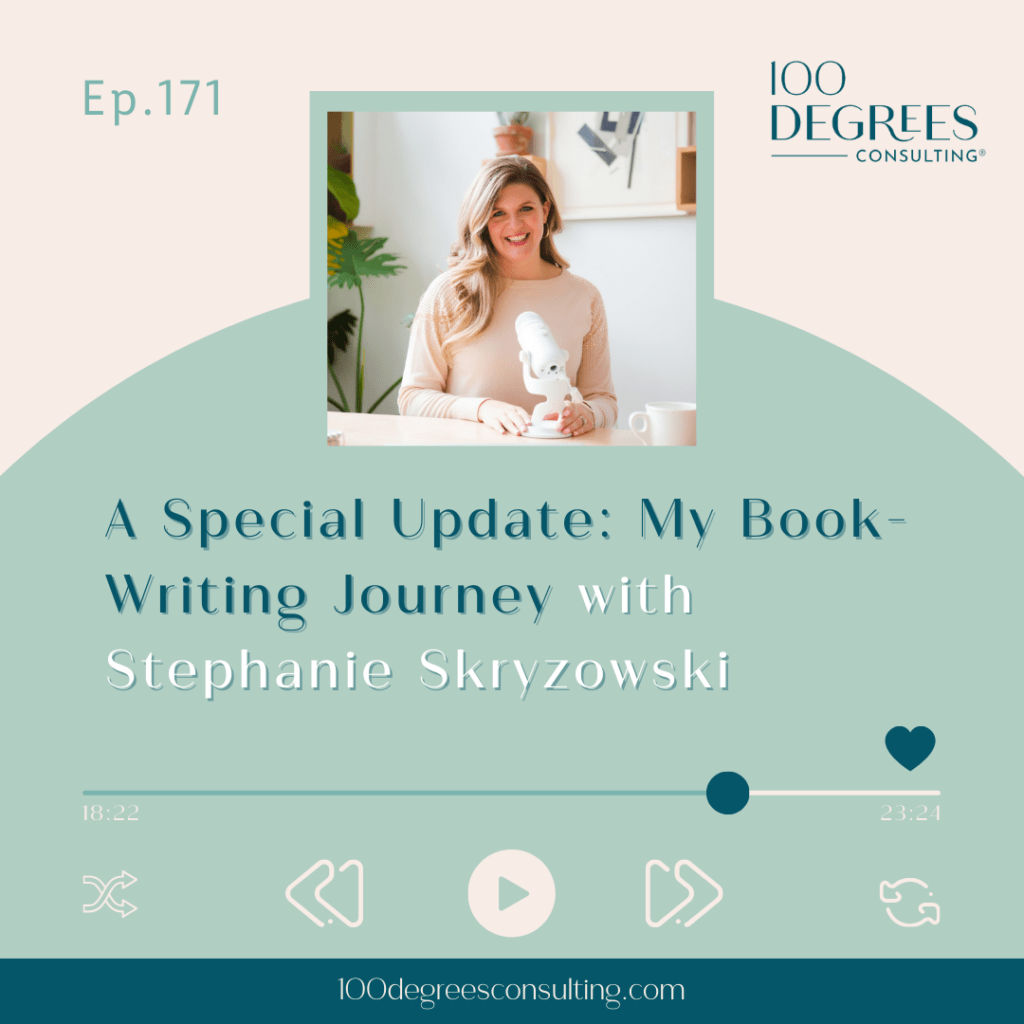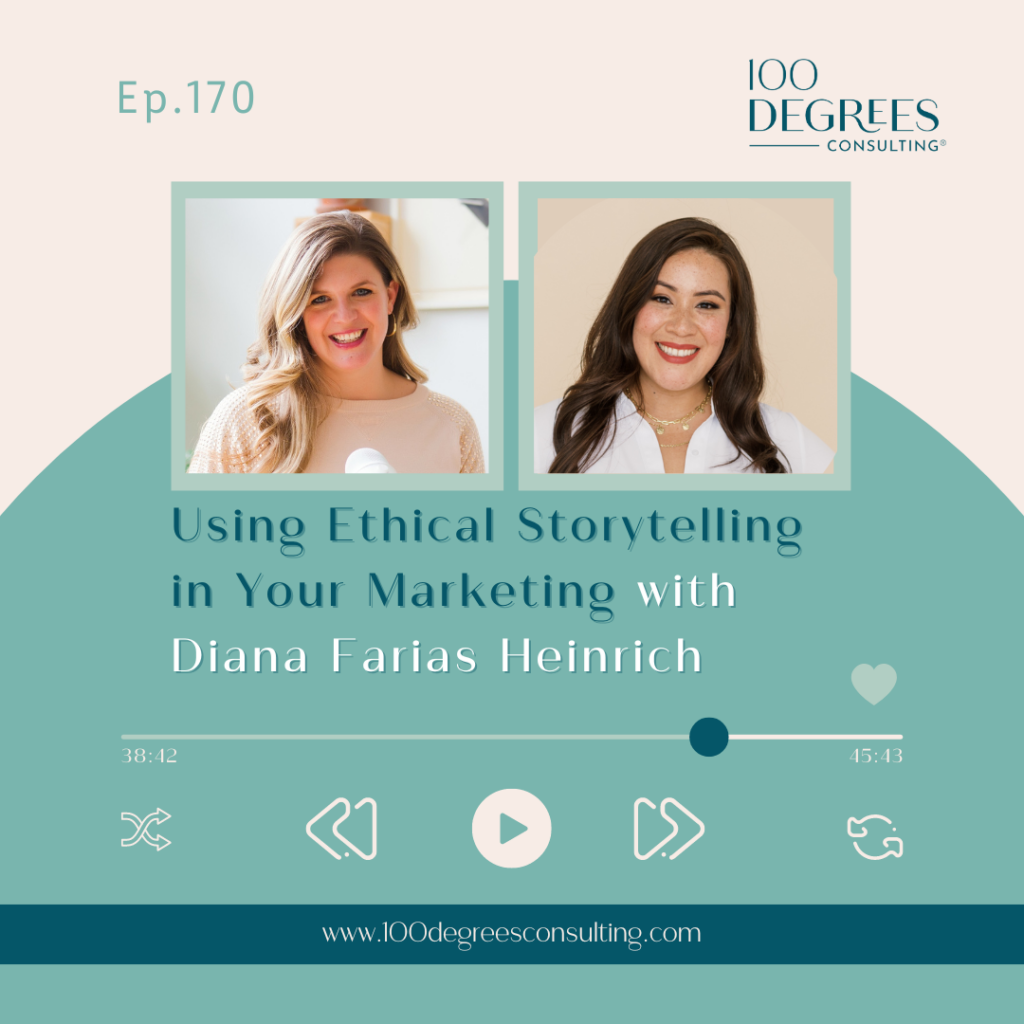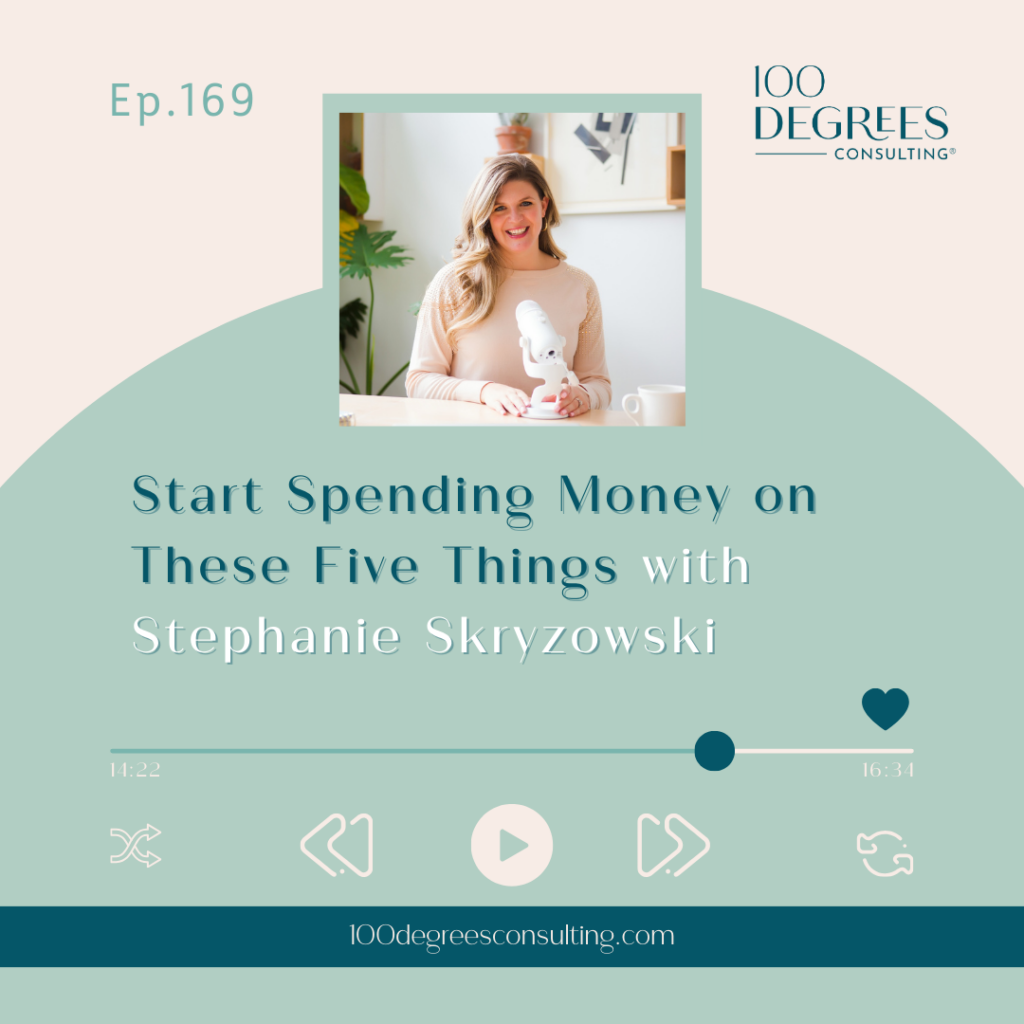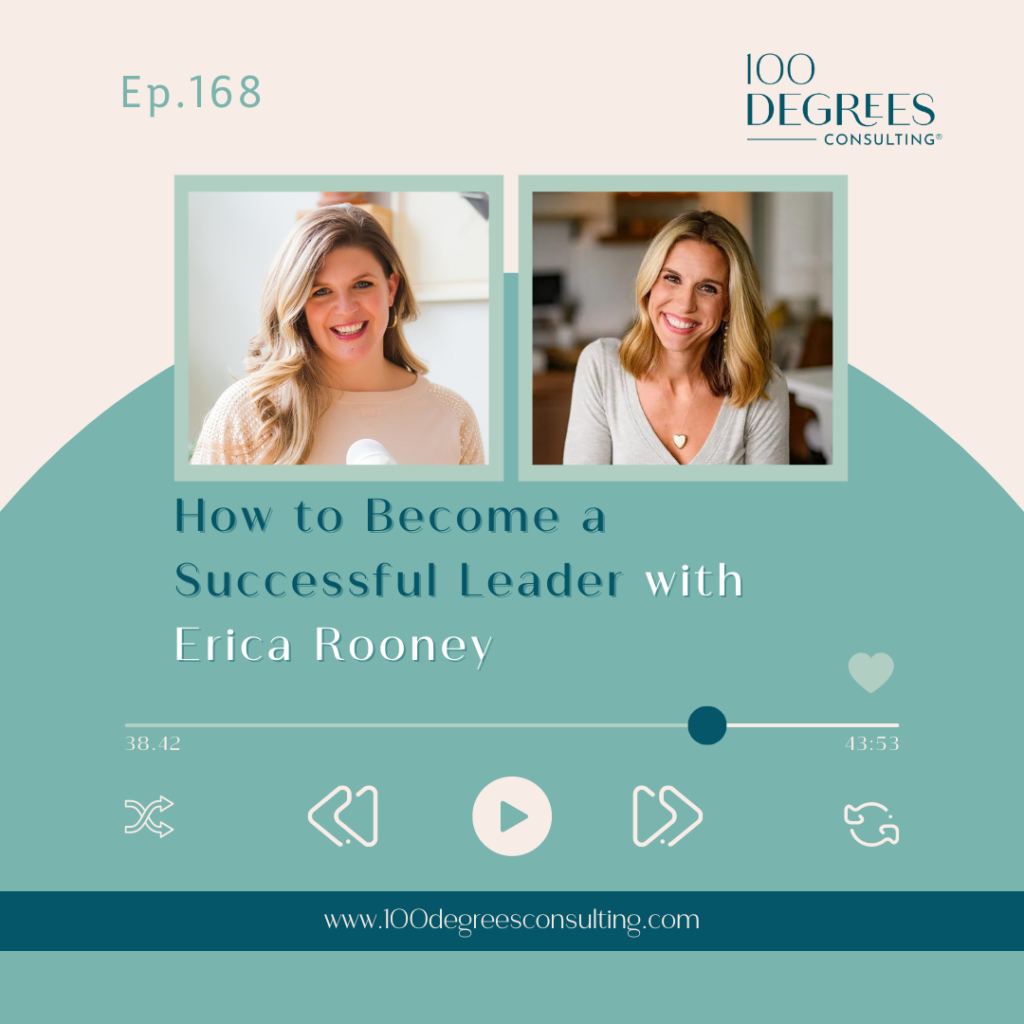Transcript Episode 170 – Using Ethical Storytelling in Your Marketing with Diana Farias Heinrich on The Prosperous Nonprofit
[00:00:00] Stephanie Skryzowski: Welcome to the prosperous nonprofit, the podcast for leaders who are building financially sustainable and impactful nonprofits and changing the world. I’m Stephanie Skrzewski, a chief financial officer and founder and CEO of 100 degrees consulting. My personal mission is to empower leaders to better understand their numbers, to grow their impact and their income.On this show, we talk to people who are leading the nonprofit sector in new. Innovative, disruptive, and entrepreneurial ways, creating organizations that fuel their lives, their hearts, and their communities. Let’s dive in.
Hey everybody. Welcome back to the Prosperous Nonprofit. Today, we are talking about Something that is very far outside of my zone of expertise, but that is exactly why I have brought Diana Farias Heinrich onto the [00:01:00] show to talk to us about all things marketing, communications, and ethical storytelling. So y’all know I live and breathe in the spreadsheets and Diana is a storyteller, a professional communicator that especially works with nonprofits.
to educate them around ethical storytelling. And then she provides, you know, marketing and communication support to nonprofits. And so we are so lucky to have her on this episode today where she walks us through her ethical storytelling framework. And there’s a lot of practical takeaways that anyone can use to make sure that you are telling the stories of your clients, of the people that you’re serving and you’re working with in an ethical way and in a way that serves.
Not only you as an organization, but most importantly serves them really well. So she has a really powerful story as to how she got started into all of this and which she kind of kicks us off with. And so you’ll [00:02:00] see the difference between ethical storytelling and. Not so ethical storytelling, right? And she shares the impact of a situation that she was a part of.
That was the sort of not so ethical storytelling. And so I think it’s really powerful and I think you’re gonna get a lot out of this that you can easily take action on. She also shared an amazing guide to informed consent conversations that I think is super, super practical and tactical for all of you too.
So we’ll share the link in the show notes and at the end. So let me tell you a little bit about Diana. Diana Farias Heinrich is an entrepreneur, speaker, and marketer. As the CEO of Abra Marketing, Diana helps nonprofits execute effective and ethical communication strategies to raise more money. She is certified as an advocate for survivors of domestic violence.
And for DEI in the workplace, she holds bachelor’s degrees in literature and writing and Latin American studies. And her proudest accomplishments are being a mom and a wife and helping women in Ghana start sustainable, [00:03:00] clean water businesses. And so we got to talk a little bit about her journey. We didn’t go too much into what she did in Ghana, but it is an important part of her journey, which I think is so cool.
So anyway, without further ado, let’s get right into my conversation with Diana. Hope you enjoy. Thanks
Hey, everybody. Welcome back to the Prosperous Nonprofit. And I’m really excited to be here with you today and with my guest Diana Farias Heinrich. Diana. Welcome. Hi, good to be here. Yes. So tell us a little bit about yourself and about what you do.
[00:03:39] Diana Farias Heinrich: Yeah, so Stephanie, first of all, thank you for having me.I’m super excited to be here to get to talk to your folks. So I am the CEO and founder of Abraham Marketing, and I’m all about integrity based marketing communications for nonprofit that’s rooted in ethical storytelling, because at the heart of anything that I do with my [00:04:00] clients, we start with a story and then go from there.
[00:04:03] Stephanie Skryzowski: Amazing. And can you tell us what is, what do you mean by ethical storytelling? What does that mean? [00:04:09] Diana Farias Heinrich: So when I first got started in nonprofit as an in house communications and development coordinator, it was my very first job from the get go. This was about seven ish years ago. And, uh, one of my first assignments was to write stories about these 10 young women who had won college scholarships.And so it was my job to write their bios and take their photos and put them online and then use that to market and fundraise for the upcoming luncheon. And so, you know, anything from, I was. putting their pictures and stories on the website and LinkedIn and Instagram and Facebook, the donation pages, all of the event, like physical event material.
So all of these things had, you know, these pictures of these girls and their little mini bios that I had written. [00:05:00] And so I felt really good because I was really connected to the mission. I was really proud of the work that I was doing. I was really proud of the girls for everything that they had accomplished.
Um, and so I did all of that. And then we have the luncheon, the fundraiser goes great. We hit our goals and I’m feeling really good on top of the world, right? Cause this is like in my first three months of my new position, right after a career change. And then I’m sitting there doing my work one day and I.
Happened to be eavesdropping on some of my coworkers because I heard the names of one of the girls that I had written about, right? And I had memorized their names to this point. And so, you know, they were kind of talking hush hush. And then I said, Hey, what happened with her? And then they told me that she had been involved in a domestic violence situation and her ex was being led out of jail.
And so in that moment, I knew that everything that I had written about this young woman could lead her X [00:06:00] Factor. I had published her first name, her last name, her kid’s name, the program location that she was in. And nowadays, I mean, you can Google anything. You can search for people with just a photo of them, right, to find out.
Lots of different things about them. And because I’m an, um, advocate of survivors of domestic violence, I knew that I needed to take down all of this information immediately. So I went back to my computer and I took down everything that I could. But the thing is, is that once you put something online, It’s out there.
You cannot take it back. You can’t take back the shares. You can’t take back the emails like the damage was already done. And it left me with this feeling of like, if I had known about this young woman situation, I would have never put that stuff online in the first place. And so that put me on this path to figuring out how do I do things.
differently because I was the one always hitting that publish button and putting all of this [00:07:00] information out there. But there was a breakdown in communication, right? Because had I known, I wouldn’t have done it in the first place. And so this is before I knew anything about ethical storytelling or informed consent or like, you know, making sure that you’re telling stories in the way that people want them to be told, you know, all of this, I learned in the years after that.
And it was because of that experience, because I wanted to make sure that that never happened again. And why, you know, telling stories with integrity is so very important to me and at the core of what I do with all of my clients.
[00:07:36] Stephanie Skryzowski: Yeah, that’s an incredible story. And what a, what a lesson I think that you learned from that experience and the trajectory that it’s then sort of taken your career.And, uh, you know, I think I heard you tell that story when we first met and it was so, so powerful. And I think it really, uh, Exemplifies what ethical storytelling is and why all organizations, regardless [00:08:00] of the work that they do need to, you know, keep this in mind. So what has your career path looked like?
You mentioned that you had started working at this nonprofit after a sort of career shift. So what has your journey looked like to lead you to what you’re doing now?
[00:08:14] Diana Farias Heinrich: So [00:08:15] Stephanie Skryzowski: I was formerly [00:08:16] Diana Farias Heinrich: a project manager for software development companies. Um, I was also a project manager for a leadership, uh, education company.So I did a lot of project management, um, and did that for several years. And then I got a little bit burnt out from it. And I ended up, Um, quitting my job to go do volunteer work in Ghana. And yeah. So, so what happened is that, um, I applied to be a part of this cohort with an organization called Saha Global, where we.
did some fundraising and then went to Ghana and helped women in a rural village start a sustainable clean water business. Um, and so I was really attracted to this mission because it was [00:09:00] about business. It was about sustainability. I learned so much through that process. And then when I came back, I realized that there was like a lot left to do and there was a lot that I still didn’t know.
Right. And so it’s like, you know what? I think this is, this is the time I was. Done with project management. And I was like, I’m going to go into nonprofit somehow, and I want it to be creative. So I started volunteering as a photographer for different nonprofits in the Bay area here in California. And that’s essentially what got my foot in the door between doing that volunteer photography and, you know, doing some fun grassroots fundraising.
And that’s how I ended up getting my, my first position in changing careers.
[00:09:44] Stephanie Skryzowski: Amazing. I love that. And then what has the shift looked like from working inside of nonprofits to then doing your own work? [00:09:52] Diana Farias Heinrich: Oh, so now, well, what happened is in 2021, like late 2021, I was laid off from my [00:10:00] position and I just had this feeling of like, I’m not done yet.Like, I’m not done working with nonprofits and I wanted to be able to work with multiple clients at once. Yeah. Because most nonprofits can’t afford to have an in house communications and marketing person. Usually it’s just a development person who’s doing all of the things. And you know, it’s, it’s a lucky organization that has built themselves up to the point where they can have in house.
Um, and even then they’re usually like I was starting off at a very junior level, but now as you know, um, Working as as the CEO of my company and the creative director, I get to help multiple organizations at once, right? Bring them that kind of that senior level knowledge to be able to do what they need to do in communications, do the strategy, do the execution of it and, you know, look forward towards reaching their strategic goals, you know, without them having to necessarily pay a full time salary for a senior level person.
[00:10:59] Stephanie Skryzowski: Yes, I [00:11:00] love that. A fractional, fractional marketing and communications person, just like what, what my company does with fractional finance. That’s awesome. I love that. I think it’s so needed. And I’m thinking back to like when I was working in house, we sort of lumped in marketing and communications and fundraising all into one department.And so when you just said, Oh yeah, the fundraising person’s like Responsible for all of it. How do you, like, if we’re sort of explaining to our listeners and they’re probably think, wait, fundraising, marketing, communication, it all is the same thing, isn’t it? How do you differentiate those in the way that you communicate and the way that you work with your clients, like fundraising versus marketing communications?
[00:11:42] Diana Farias Heinrich: So the way that I like to look at it is communications is what you’re saying. What’s your message? What is the thing that you’re using to connect with your audience? Like I’ll give you an example from right now. What I use to connect with my audience is the story of how I got into my ethical storytelling journey to begin with. [00:12:00] That’s, that’s my message. That’s my story. I help my clients find that message, find that story. And a lot of times it’s multiple stories because it’s about their clients, right? That’s the communications piece of it. Then the fundraising or the development piece of it is actually making the ask, asking people for donations.It’s the events. That are the fundraisers. It’s, you know, the campaigns, the end of the year campaign, the giving Tuesday, the spring fundraisers, all of those things. It’s making me ask. And then the marketing is what you’re doing in between to make sure that you’re staying top of mind for all of those supporters who are wanting to give to your organization.
Right? So it’s. Telling them the impact of what their previous donation is, for instance, it’s sharing those success stories and those transformational stories. It’s telling them other ways that they can evolve, get involved in the meantime, keeping them up to date with what you’re doing, or what is going on with the mission or like the larger perspective.
And that, again, what you’re telling them in between is also [00:13:00] part of the communication strategy. And then the marketing is all of those different channels that you’re using Get them that message, whether that’s email or like we’re doing now, podcast, social media, all of those things, right? You have to actively be talking with people and engaging with them.
And that’s the marketing piece in between.
[00:13:19] Stephanie Skryzowski: Yeah, that’s so good. And I feel like a lot of small organizations don’t have a strong marketing and communications piece. It’s like we have fundraising because we got to bring money in and that’s our focus. And like the marketing and communications kind of seems like an afterthought.It’s really just like, A means to an end, like it’s the means to the fundraising end. And that’s like, you know, it’s pretty much it. I, I’m thinking of it from the budgeting perspective and I don’t often see like a decent marketing communications budget, um, in nonprofits. And I would argue that it’s just as important as having a budget for fundraising as well.
Yeah, well, I mean,
[00:13:57] Diana Farias Heinrich: that’s the struggle right with with nonprofits. [00:14:00] It’s an unfair struggle to have to, like, reduce the overhead. And so, like, 1 of the 1st things that always gets cut is, like, the marketing budget. But if if you think about it, like, development folks are really, really good at figuring out how much to ask for in donations, who to ask, like, they’re very their thoughts.I almost like, but like, Development akin to like sales, right? You have to know the person that you’re talking to. You spend time with them. Like it’s a very like personal type of relationship that development folks are building. That doesn’t give them a lot of time to do like all of the, you know, constant execution that you’re having to do as a marketer to like keep messages going and to produce content and things like that.
So it’s a huge ask to ask, you know, development person to do all of those things. Thanks.
[00:14:49] Stephanie Skryzowski: Mm hmm. Yeah, absolutely. And I think that just is like the sort of the nonprofit ways like let’s hire one person and ask them to do 17 jobs and wear all that. And yeah, we’re gonna hire you to [00:15:00] fundraise, but also you have to be a marketer and a communications expert.So,
[00:15:04] Diana Farias Heinrich: oh, and a graphic designer. And a, and a website manager and a photographer and a, and a copywriter, [00:15:12] Stephanie Skryzowski: all of those things. And an event planner. And an event planner. Yes, exactly. You’re right. Oh, so many things. And that’s where hiring a fractional person who has that really high level expertise to come in and play that role on a fractional basis is like so, so, so, so valuable.Thank you. So for organizations who are like, okay, all right, I’m into this marketing and communications thing. What do I need to think about? What are some tips? What would you say to organizations who maybe have not really focused on their marketing communications in the past because of budget, because they’ve been focused on fundraising, whatever, what, what are some of your, maybe a couple of tips that you would have for them?
[00:15:50] Diana Farias Heinrich: Oh, my, my very first tip is get your email newsletter going at least once a month. If that, like I always with my [00:16:00] clients, we start small, right? Because my goal for my clients is that they will be able to grow to the point where they do hire folks in house. To do this for them, right? Um, and so the first thing that we do is we work on that, that email newsletter.We look at what message do we need to be sending out and then get it out. We can always refine the message. You should always be refining your message as you go on, but get your email newsletter going out and it doesn’t have to be a complicated thing. It can be a very simple thing as just A couple of little, like, paragraphs from the ED, and when I say paragraph, I’m talking about, like, online digital paragraph, which is, looks like, uh, literally a sentence.
You know, um, we’re, we’re not writing essays here. We don’t want to write essays online. Um, but just a, a quick note from the executive director that says, hey, So, and so please use people’s first names whenever you can like, this is what’s going on at our [00:17:00] organization. This is what’s coming up. Like, so happy to have you here.
That kind of a thing and just get that, you know, every, every month, just a little thing to just show people that you’re still there and that you’re not. Just looking to them for a transaction because that’s a lot of the fear that I hear is like we don’t want to be transactional with our donors and unfortunately, if you’re not communicating, if you’re not marketing in between your fundraising, that’s exactly what you’re going to get.
You are going to make it a transactional relationship, whereas if you’re, you know, keeping engaged with them in between. You know, that you’re not doing it transactionally anymore. You’re building a relationship, even if it is something that is on online. Right. Because I mean, a lot of what I do as a business owner, I build a lot of relationships because of the power of like online connection.
Um, so we got to utilize that, utilize what’s at our fingertips. Um, and just, you know, it doesn’t have to be complicated. It can literally be like. five sentences and just send it out [00:18:00] and just start somewhere.
[00:18:03] Stephanie Skryzowski: I love that because that’s such like a low hanging fruit that anybody can do. It doesn’t cost a lot of money.Anyone can write an email and maybe it’s not going to be the most beautifully designed thing. Or maybe if it’s not going to be like the most beautifully worded, you know, story about whatever, but at least you’re, you know, You’re starting something, you can keep it consistent. It’s top of mind, anybody can do it.
And it does start to build that relationship with really minimal resources. That’s a great tip for anybody. Um, and you know, any organization, if you’re not sending out emails to your, your audience, to your network, now is the time to start. And how frequently should an organization be sending out an email?
I say the minimum is
[00:18:46] Diana Farias Heinrich: once a month. I highly encourage twice a month. Um, and so what I like to do is, uh, because of, you know, my background as a project manager, I’m like all about like, let’s. Be really efficient about what we’re [00:19:00] doing. I love repurposing content. I love breaking them all up. So what I do is, you know, get together with a client from the organization, put together a story that they feel good about, that the organization can feel good about because we’re doing so through an ethical storytelling process, and then put that into the newsletter.And then you have an email from your ED or someone within your organization and bam, you’ve got two emails a month, right? And then it’s just about creating like a workflow around that. If you can get to the point where you’re doing emails weekly, that’s amazing, right? Oh, because we, there’s so much noise in our inbox.
There’s just so much that we have to like shift through that, you know, we’re not always keeping the things that we really care about top of mind because we’re not seeing them often enough. Right. So the more that frequently that we’re able to email the better I get, like a lot of people have kind of a fear of like, Oh, like our donors are going to like unsubscribe if you know, we’re sending them too [00:20:00] many emails.
The thing is, if they unsubscribe, they weren’t for you to begin with, or, you know, we never actually know why someone unsubscribes. Sometimes somebody is just doing an email purge and then they’ll go sign up for your stuff again later. Right. Because. You’re communicating with them in other channels, like social media.
So they’re not going to completely forget about you as long as you’re kind of taking this like multi channel approach. So it’s, you know, it’s okay for people to unsubscribe. It helps you keep your list clean. So it’s, you know, don’t, don’t be afraid of that. That’s it’s totally okay. Perfectly normal for people to unsubscribe.
Exactly.
[00:20:35] Stephanie Skryzowski: Yeah. I agree. And I, you know, in any situation like this, especially when it comes to marketing, I’m always thinking about my own behavior. Like what do I do? You know, I often will, if it’s like, okay, well this content isn’t relevant to me anymore. Even though it was six months ago and I signed up, I’ll unsubscribe or maybe I’ll just set up an automatic filter for somebody that I do want to stay on their list, but I like don’t really want to see their stuff in my inbox every day.I just set up a filter and [00:21:00] it goes into a folder and I read it when I want. So it’s like, People have all kinds of different preferences and I feel like you cannot create a strategy for your organization around what you think somebody may or may not be doing with their emails. Um, and so I love that recommendation.
I also love the idea of setting up a structure and a cadence for how we’re going to get this done. And I would imagine that you probably already have content that you are Generating, creating for other purposes that you can easily just drop into an email. Like I’m sure, you know, I wouldn’t, I wouldn’t necessarily think that you would need to find a new client that your organization works with every single week and sit down for an hour long interview to talk about.
To write this email, like I don’t think you would need to do that. I think the content is probably there. If you’re thinking about it, if it’s top of mind, like we were talking before we started recording and you were like, yeah, I’m always thinking content. [00:22:00] I’m always thinking how to repurpose things. And so if you can kind of get that at the top of your mind, I think that would be super helpful.
Yeah, exactly. To be able to do these emails on a more frequent basis. Yeah. Fantastic. Having
[00:22:11] Diana Farias Heinrich: that cadence is so important to expect that workflow and that next thing to do. Um, because I was working as, you know, my team was, uh, a development director and then myself as like the manager. So it was two people handling all the things, me doing like all of the actual like marketing execution.And I got into, Oh, Great rhythm because I had a cadence. So everybody knew when it was their turn to like, you know, supply, um, or to start the conversation about, Oh, you know, who are we going to write a story about next, who’s up for this, who’s ready. Um, and then take the time to do that as I’m getting a new story ready.
The other stories being published. Right. So it’s a rhythm, you know, it takes, it takes a, [00:23:00] just a little short leap time to get the first one going. And then you just start the process and you just do it over and over again. And then you’re never like, you’re never short for stories. You need one story a month.
And even that is more than enough. You can do a story every day. Two months and that would be more than enough because if you consider how you can break down that story into so many different pieces of content, you’re golden. You’ve got a ton to go by there. Even a quote from a story becomes its own little piece of content that you can use in a ton of different ways.
And that’s why cadence is really important and being able to have that expectation and that teamwork within your own staff. Um, and that’s why I really love the ethical storytelling approach because it takes care of. The client’s role in the storytelling process, they know what to expect, the staff knows what to expect, what you’re going to do with everything.
And then, um, you know, you also are always ready to, you know, produce something [00:24:00] that everybody’s proud of.
[00:24:04] Stephanie Skryzowski: Are you tired of navigating the labyrinth of software options, wondering what works best together and how to afford it all? It is a dizzying task from choosing the right accounting software to ensuring seamless integration. Between all the systems feeling lost in the jargon, fear not introducing the best tools for an efficient and prosperous nonprofit.This free resource is a curated collection of topnotch software solutions personally endorsed by our team at 100 Degrees Consulting. Visit 100 degrees consulting.com/tools to access our handpicked list designed to streamline your operations and boost your nonprofit success without. Adding a ton of extra cost or extra team.
Don’t miss out. Head to 100degreesconsulting. com slash tools now to download the best tools for an efficient and prosperous nonprofit. Let’s [00:25:00] elevate your nonprofit to new heights.
Can you tell us more about your sort of ethical storytelling framework? What does that look like? So I, I’m
[00:25:13] Diana Farias Heinrich: calling it EquaStory. So, formerly known as informed consent conversations. I’m literally doing like a little shift here, but EquaStory is, is a framework for ethical storytelling. It’s a four piece.The E stands for explore. The Q stands for question, the U stands for understand, and the A stands for approval. So in the explore phase, what you’re doing is you’re talking to the client’s direct service staff. That might be their case manager or their caregiver or, um, you know, Whoever is helping that person from your organization, and you’re asking them a couple of exploratory questions who amongst your clients is ready to tell their story, who has had a sufficient [00:26:00] transformational process that they are ready to tell a story.
You know, you’re asking them like, okay, you’ve identified someone. Are they going through anything right now? Is there any sort of like, you know, are they going through any trauma, any crisis situation where now would not be a good time? You’re getting all of that background information. The second piece of it is what are you as the communications person?
What are you going to do with that story? What’s the plan? Are you going to pitch it to good morning America? Are you going to, uh, you know, do a six week. You know, blitz for an upcoming fundraiser. Are you gonna use it for your end of appeal newsletter? What are you gonna do with that story? And that’s where you have to explore all the different ways that you want to use that story.
And then we go to the questions. So quality questions are really important to making a client have a great experience when they’re sharing their story. So that includes, you know, making sure that you’re using asset space language, that you are, [00:27:00] uh, being aware of things, for example, that you should not be asking in your questions that comes from the exploratory phase that you did with their direct service staff.
Um, it means creating an environment where they can feel safe. Safe and secure. And you can build some trust with them. Um, and put the power back in their hands, right? To, to share with them, like, you know, this is what we’re going to do with the story. And that’s what takes us into the understanding. How do you get someone to understand what it means to share their story publicly?
And there’s a couple of tools that I use from this. And this came from that first exploration. When I had published that story online, it’s called informed consent. So informed consent. Is the first school. It actually comes from the medical field. Um, and it’s basically just saying that the person who is being involved in this process understands what they’re going through.
So, you have to explain it to them in plain language, what you’re going to do. So, in a medical field, that might look like, let’s [00:28:00] say, you know, you’re, you’re going in for procedure at the doctors, the doctor is going to say, this is how the procedure is going to look like. These are the benefits. These are the risks.
Do you understand and do you consent to having this procedure in storytelling and marketing for nonprofits? It looks like. This is how I plan to use your story. I’m going to pitch it to Good Morning America. It’s going to be featured in the local news. It’s going to be on Facebook. It’s going to be on LinkedIn, for instance, right?
I’m going to tell you what I’m going to do with that story. And then to make sure that you understand the risk, you use a second tool called the stakeholder test. So the stakeholder test is something that comes from an article published by Save the Children called the Practicalities of Informed Consent and Development Photography.
Thank you I highly recommend people go and look that up. So, with the stakeholder test, you’re basically just putting what you’re doing into the context of a person’s everyday life. So, let’s say, for [00:29:00] instance, I were to backtrack to those 7 years ago when I published that young woman’s story, I would have said to her, hey, I’m going to publish this story.
You know, on Facebook, if your partner was to see that, how would you feel about it? And that might have surfaced actually, I don’t want anybody to see that you might be working with folks who You know don’t have papers And you’re trying to put their story out there in their name. Do they understand that that could have negative legal consequences for them, you know, and all of these things can come up in the, you know, in the exploratory phase with the direct service staff, but sometimes they don’t.
And this is where you have to check directly with the client, you know, to find out like, are, is there something beneath the service where we shouldn’t be putting this stuff online, where we shouldn’t be making it public. And then The last step of the process, the A is for approval. And that means running [00:30:00] the story or the piece that you’ve created by the client to get their final approval.
So I knew this young woman, um, I worked with her for years and she had had a huge transformation in her life. And so we were kind of writing this like super cool, like she was graduating college. She had like a degree and minor and like all of these things. And, you know, one of the first lines that I had written was You know, when she found out she was pregnant, her parents did X, Y, Z.
And I ran by her and I said, here’s the draft. And then she said to me, you know what, Diana? She’s like, it makes it sound like my parents were like never supportive. And that’s not the case. They were shocked at the beginning when they found out that I was having a child, but then they became my biggest supporters and they still are my biggest supporters.
Can we change that line? And so we changed it. And that felt like that was a huge win for me to know that we had [00:31:00] gone through the process. so well that she understood what it meant for something like that to go public. Um, and to be put online and for her parents to possibly see it. And so we just, we changed the line and then we published the story.
And that’s where, why the approval process is important as well. And so that’s your EQUA Echo Story.
[00:31:23] Stephanie Skryzowski: That’s amazing. I love that entire process. And where do you feel like, are there, Are there spots where you’re seeing nonprofits that you’re working with, like missing? Are there pieces of that that you’re like, okay, yeah, typically organizations get like X, Y, Z parts of the process, right?But like, here’s where they’re dropping off or here’s what they’re really missing. And you know, I loved your last piece about like sharing the story with the person before it goes live. And I feel like I’ve definitely, I could imagine a scenario in which it’s like, okay, we’re Kind of going through this [00:32:00] process for ethical storytelling all the way up until, great, we have our final story.
We’re done. Let’s just post it. Um, but are there pieces of the process that you’re seeing that organizations are, are inadvertently skipping?
[00:32:13] Diana Farias Heinrich: You know, along the way, it depends on the organization. A lot of this conversation around ethical storytelling is new for a lot of nonprofits. It’s starting to build momentum.The ones that are. In the middle of it, let’s say like, like I was before they’re having trouble with, you know, getting leadership on board. Um, you know, they might be like, you know, mid level managers or maybe even directors, but they’re like trying to get their board of directors, for instance, on board with doing this process of ethical storytelling.
And the reason, the reason for the rub is that it takes more time to tell a story this way, because there’s. back and forth. There’s time that you need to take to make sure that [00:33:00] everybody is on the same page and that you’re not going to publish something that’s going to have negative consequences. And so that’s one thing, or there’s other non profits who are just blanket, throwing out stories about people without knowledge.
Ever running by them where the, you know, the, the client sees it later and is like, surprised, like I had no idea that you were doing that. So to give you an example, um, I was speaking with, with a young woman and she mentioned to me that a friend of hers had gone to volunteer for the nonprofit. Fundraiser and this nonprofit was giving that, that person services.
So when they got there, they saw their photo attached to a box for donations. With a little blurb, a story that misrepresented her family. Um, and that’s the kind of thing that nobody wants to do, right? That’s the kind of thing where it’s [00:34:00] like, what do you do in that situation? If you’re that person that sees your story being used that way, what do you do?
And so I asked, would she do something? And she said, no, she kind of just gave up on it. Like. What am I going to do now? And that’s just that’s not right. Um, and so that’s why I’m saying if you don’t have some sort of like ethical storytelling policy, you know, get to work. Um, because the last thing that you want to do is, you know, betray your client’s trust and.
You know, nonprofits. I see put a lot of thought and effort into running programs that help people based on their values. Those values need to make it into the communications and fundraising processes as well.
[00:34:46] Stephanie Skryzowski: Yeah, that’s so interesting. Oh my gosh. I can’t imagine being that person that shows up to the fundraising event thinking that they’re here to volunteer and like then their faces all over the, you know, box for donations.That is [00:35:00] incredibly harmful. And um, like you said, these organizations are here to do work, to serve a community and. That’s it. often, you know, sometimes doing this work that is actually really harming people, um, instead. So yeah, that is super powerful. Go ahead.
[00:35:18] Diana Farias Heinrich: I will, I will just say one thing is that, you know, I am not perfect.I’m not here to judge anyone, but what I do want to do is raise awareness about this. Um, and the more that I talk about it, the more that, you know, I’m hearing from, from nonprofit leaders who are like, yeah, actually X, Y, Z happened at my nonprofit too, you know, and there’s, there’s. Those of us out there who are like, Hey, we need, we need some help.
We need to spend some time to do this right. And to do right by our people. So, you know, it’s okay if you’ve made mistakes. If, as long as you recognize them and you start to change, you start to do something, one little small step to move forward in the right direction. And that might be, maybe you start with [00:36:00] like the approval process.
Maybe you start with the, um, You know, making sure that you’re talking to the direct service staff, you know, and bridging that, you know, internal communications divide between what fundraising is doing and what the program staff is doing, um, to, like, make sure that you guys are all the same page. And that’s actually what I really love about the Echo Story framework is because of that first exploratory part where fundraising and program is working together, you build a culture.
around ethical storytelling where everybody’s on the same page about how clients are treated no matter what part of the organization they’re interacting with.
[00:36:41] Stephanie Skryzowski: Yeah. And so is that part of your work as well to kind of help organizations come up with their, their policy, their practices around this? Um, so that, you know, when hopefully the point where they do outgrow your work and your services and they can bring this in house, they kind of already have that.That [00:37:00] framework and that shared understanding. Is that something that you help with as well?
[00:37:03] Diana Farias Heinrich: Yeah, yeah, absolutely. I, I can help folks with doing their, you know, storytelling policies, what sort of things that includes what it looks like in a specific organization. Um, and then how do you actually. Enforce something like that, you know, making it part of the process of the organization of best practice.So making sure that, you know, it’s reviewed at, you know, Onboarding, making sure it gets reviewed like once a year, for instance, like, you know, putting those processes in place so that people are coming back to it and just being reminded of like, this is important to our organization. This is why, and here’s how you do it, um, because I think a lot of folks, like they know it’s important, but then it’s like, how do you do it?
And that’s why, you know, the framework came together because I spent so many years, like, how do you actually do this? Cause there’s, you know, there’s nobody to tell me how to do it. I just had to figure it out on my own.
[00:37:57] Stephanie Skryzowski: Yeah. And what, like, what [00:38:00] results have you seen with organizations that have really implemented, um, not only, you know, um, marketing and communication strategy and this consistent work, but also using.this ethical storytelling framework versus those organizations who are just like, I don’t know, doing their own thing. Like what results have you seen for the organization by doing this?
[00:38:23] Diana Farias Heinrich: Yeah. So, um, to give you an example where this started, that organization, where this started, they are still doing it to this day.And I haven’t been there for, you know, since the end of 2021, because the process is, Are in place, you know, the forms are in place. The policies are in place. The workflow is in place. So that’s always the goal is to make sure that, you know, it outlives any 1 person’s. You know, 10 year at an organization.
That’s really what a best practice is. Um, and so that’s just one example to say, like this, it works, you know, [00:39:00] to, to bring everybody together around this, this common cause and earlier. I misspoke and I said, that’s how I figured it out. I did not figure this out by myself. I sure led the process because I was always the one hitting the publish button.
But the reason that I knew to talk to the direct service staff is because I was working with my colleagues. to say like, okay, like, what are you seeing in this process that doesn’t work? Um, and just having those very open conversations about like, you know, them feeling like their clients weren’t being protected, um, or their clients, like not really knowing or feeling like obligated to like do something like this, because that’s an important part of the process.
Making sure that the clients know that they can say no. You’re not going to stop receiving our services, like, no harm, no foul, like, like, you can say no, and that is a complete sentence, and that’s fine. Um, and, you know, putting that [00:40:00] power back in, in their hands. And so those open conversations are, were really critical in order to, like, figure out what this actually was, what this process actually was.
[00:40:11] Stephanie Skryzowski: I love that. I mean, I could see every nonprofit having a handbook for what storytelling and ethical storytelling looks like at their organization. And that would be so helpful to equip everybody in the organization with. So I love that. That’s, that’s something that you can come in and help organizations do.And like you said, that sort of makes That work, um, lives on even after, you know, even after you’re gone from the organization. So that’s amazing. Um, do you have any, uh, you know, aside from the one, the, the first example that you sort of kicked us off with, do you have any favorite stories that you have uncovered in your work with different nonprofits?
Do you have any favorites, the one, the one you want to share?
[00:40:53] Diana Farias Heinrich: Um, I would say, so one of the ways in which I deliver this work is through workshops [00:41:00] for multiple, like for folks coming from lots of different organizations, and they are trying to take this back to their individual organizations to try to implement something new.And so what I am giving them is all of the templates and all of the, um, You know, the, the framework and walking them through all of that, going through photography policies and essentially giving them this huge, like, crash course and like marketing and doing it ethically. Um, and so some of the results that I saw from that was folks just essentially being opened up to a whole new frame of mind of, like, how do I do this work?
How do I make it work? And having those first steps and ideas for how to do that. And that’s, you know, the transformation that I saw and then was just like, you know, a button kind of clicks. It’s like, oh, this is where I start. This is the next step that I take. And so that’s where I think the work has been [00:42:00] really impactful.
[00:42:03] Stephanie Skryzowski: Yeah, that’s amazing. Um, I love it. Our work is so different. Um, and you know, I’m working with numbers and you’re telling these incredible stories, but I love just learning about all of the different pieces that make up, um, a really incredible, really impactful nonprofit organization. So. This is so cool to chat through this, especially because it’s not really, this is not my wheelhouse at all.So just learning about this is, um, is amazing. And so I love to ask this question before we wrap up all of our episodes. Um, what does a prosperous nonprofit look like to you?
[00:42:38] Diana Farias Heinrich: A prosperous nonprofit looks like. And you’ll probably agree with me because I’ve listened to your podcast before, but it looks like a nonprofit who keeps its wheels turning through processes and best practices at all the different levels of the organization, whether that’s finance [00:43:00] or marketing or their programs, there are processes in place for folks to know what it is that they’re supposed to be doing, because once they have those critical foundations, Then they can start to really grow and take off and do all kinds of innovative things.But for me, a prosperous, you know, prosperous nonprofit looks like one that has all of its foundations in place for, you know, all of the different areas of work that they’re doing.
[00:43:27] Stephanie Skryzowski: Mm. I love that. That’s so good. Yes. And I think your work covers one of those foundations and my work covers another piece of the foundation.Exactly. I love it. I, I totally agree. Um, that, yeah, having some of these sort of fundamentals in place are so important before you can really grow and, and scale. So I love that. I get a different answer every time I ask this question. And so it’s my favorite question to, favorite question to ask. Um, amazing.
All right. so much. Well, Diana. Thank you so much. I’m just so happy we got to have this [00:44:00] conversation because I think that’s like the first conversation we’ve had around this topic on the show. And I know our listeners are going to find it so helpful. Where can our listeners find out more about you and more about your work?
[00:44:12] Diana Farias Heinrich: Yeah. So I would encourage folks to go to informed consent. Conversation dot marketing dot com and agonize H. A. B. R. A. So again, that’s informed consent conversation dot marketing dot com. We’re going to be able to download. The guide to the story framework, so we’re. It goes, we go real in depth there with the different processes and I have some scripts in there.And so if you want to even just step your toe into, you know, telling stories through an ethical lens, highly encourage you to, um, download that. And then you can always find me on LinkedIn. I’m very active on LinkedIn, Diana Farias Heineck. And then you can also visit me on my website at Avida Marketing.
[00:44:58] Stephanie Skryzowski: Amazing. Thank you. Thank you. [00:45:00] Um, I’m super excited to check out this, um, guide to informed consent conversations. It’s so good. We will definitely link everything in the show notes so that all of our listeners can access that. So Diana, thanks again so much. Thanks for your time. I’m excited for our listeners to hear our conversation and to learn from you.So thanks so much for being here. Thank you so much. so much, Stephanie. I really appreciate you. Before you go, I just want to thank you for being here. To access our show notes and bonus content, visit 100degreespodcast. com. That’s 100degreespodcast. com. And I’ll see you next time.
